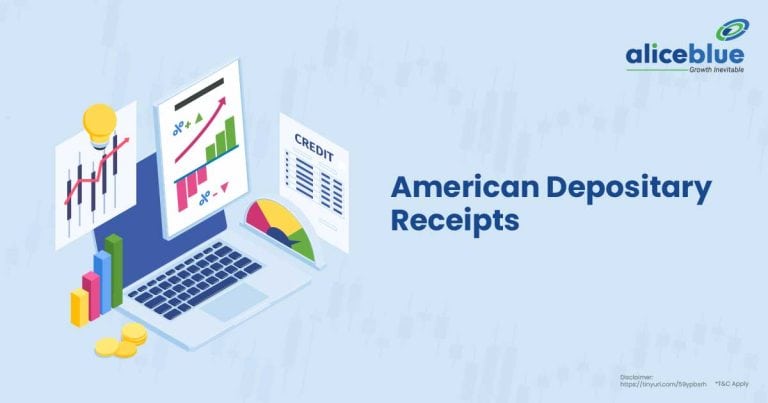A master fund collects money from several smaller funds (feeder funds) into one main fund. This setup makes it easier to handle a large amount of money and allows investors to spread their investments over different areas all at once.
Contents:
- What Is Master Fund?
- Master-feeder Fund Example
- Master-feeder Structure
- How the Master-Feeder Structure Works?
- Advantages of Master-Feeder Structures
- Disadvantages of Master-Feeder Structures
- Master Fund – Quick Summary
- What Is Master Fund? – FAQs
What Is Master Fund?
A master fund is a type of investment vehicle that manages money from several feeder funds together into a single, sizable portfolio. It maximizes returns through diversified investments while simplifying management and operational efforts.
For example, a master fund in the Indian market might receive investments from several regional feeder funds. Each feeder fund collects investments from individual investors and channels them into this master fund. The master fund, managed by experienced professionals, might invest across various sectors like technology, healthcare, and infrastructure, providing a balanced and broad investment scope.

Master-feeder Fund Example
A typical example of a master-feeder structure is when several Indian feeder funds aggregate investor capital, channeling it into a master fund that invests globally in equities, bonds, and real estate, allowing investors diversified exposure to international markets.
Imagine a scenario where multiple feeder funds across India collect investments from local investors. These funds then invest collectively into a master fund based in a global financial hub like New York. This master fund might diversify its portfolio across various asset classes, including US equities, European bonds, and Asian real estate markets. The individual investors in the feeder funds benefit from this international diversification, which would be challenging to achieve individually.
Master-feeder Structure
The master-feeder structure is an investment framework where feeder funds pool investor capital and invest it in a central master fund, which then undertakes the actual asset management, diversifying investments across a wide range.
- Capital Collection: Feeder funds collect investments from individual or institutional investors.
- Investment Consolidation: The collected capital is then pooled and transferred to the master fund.
- Diversified Management: The master fund, managed by professional fund managers, diversifies the investments across various asset classes.
- Return Distribution: Returns generated by the master fund are distributed back to the investors through the feeder funds.
- Operational Efficiency: This structure simplifies investment and fund management processes, enhancing operational efficiency.
How the Master-Feeder Structure Works?
The master-feeder structure works by efficiently combining resources from individual investors through feeder funds, which are then strategically invested in a master fund. This central fund manages the assets, focusing on maximizing investment growth and return on capital.
- Fund Aggregation
In the master-feeder model, feeder funds act as aggregation points for investments from individual and institutional investors. These feeder funds collect and consolidate funds from multiple sources, creating a substantial pool of capital for investment.
- Consolidated Investment Strategy
The aggregated funds are then directed into a single master fund. This master fund becomes the primary vehicle for managing the pooled investments. It employs a comprehensive investment strategy, typically more robust and diverse due to the larger pool of available capital.
- Strategic Asset Allocation
The master fund, which is overseen by seasoned financial experts, divides the combined assets among numerous investment options in a methodical manner. This may include various market segments, geographical areas, and asset classes, aiming to optimize the growth potential and risk distribution.
- Return Distribution Mechanism
Profits or returns generated by the master fund from its investments are then proportionally redistributed to the feeder funds based on their contributions. These returns are ultimately passed down to the individual investors in the feeder funds, commensurate with their investment stakes.
- Operational Efficiency and Cost Effectiveness
By centralizing the investment management in the master fund, this structure enhances operational efficiency. It eliminates the need for multiple investment management teams and strategies, potentially reducing costs and administrative complexities associated with managing numerous individual funds.
Advantages of Master-Feeder Structures
The primary advantage of master-feeder structures is their ability to efficiently pool resources from various sources, allowing for broader investment diversification and access to more sophisticated asset management strategies, typically leading to potentially higher returns.
- Economies of Scale: The master-feeder structure’s pooling of larger capital amounts leads to more cost-effective investment and management. This efficiency often results in lower fees and better negotiation power for investments.
- Diverse Investment Opportunities: By investing in a master fund, individuals gain access to a variety of investment opportunities. This range, often beyond the reach of individual investors, includes international markets and specialized asset classes.
- Expert Management: The master fund is typically managed by professional fund managers with extensive experience and expertise. This management ensures informed investment decisions and strategic asset allocation, often resulting in improved fund performance.
- Flexibility and Accessibility: Smaller investors benefit from the master-feeder structure as it allows them to participate in high-value investment strategies. This setup democratizes access to investment opportunities that were previously available only to large-scale investors.
- Reduced Operational Overhead: The structure simplifies the investment process by centralizing management and administrative tasks. This consolidation reduces the burden of operational overhead, making the investment process more streamlined and efficient for all parties involved.
Disadvantages of Master-Feeder Structures
The primary disadvantage of master-feeder structures lies in their complexity and potential for increased fees due to the layered investment process involving feeder and master funds, leading to inefficiencies and higher costs for investors.
- Layered Fees: Investors may face multiple layers of fees, both at the feeder fund and master fund levels, which can erode overall returns.
- Complexity in Structure: The master-feeder arrangement can be complex to navigate, particularly for new investors, leading to challenges in understanding investment strategies and risks.
- Limited Control: Investors in feeder funds often have limited control or influence over the investment decisions made by the master fund.
- Concentration Risk: If the master fund follows a specific investment strategy, investors might face concentration risks, lacking diversification benefits.
- Liquidity Concerns: There can be liquidity constraints, as withdrawing investments might be subject to specific conditions or timelines, impacting the flexibility for investors.
To understand the topic and get more information, please read the related stock market articles below.
Master Fund -Quick Summary
- A master fund is an overarching investment fund that pools resources from several feeder funds, focusing on strategic growth and effective asset management.
- A typical example of a master-feeder structure occurs when several Indian feeder funds pool investor capital into a master fund that invests globally in equities, bonds, and real estate, giving investors global exposure.
- Master-feeder structures pool investor capital and invest it in a central master fund, which manages assets and diversifies investments.
- Master feeder fund works by consolidating investments from various sources, utilizing professional fund managers to maximize asset growth and manage returns distribution.
- The main advantage of master-feeder structures is that they can efficiently combine resources from different sources. This lets investors spread their risk and use more advanced asset management strategies, which can usually lead to higher returns.
- However, the main disadvantage of master-feeder structures is that they are complicated and may cost investors more due to the multiple steps required to invest in feeder and master funds.
- Alice Blue lets you invest in stocks, mutual funds and IPOs for free.

What Is Master Fund? – FAQs
A master fund is an investment structure that centralizes the capital pooled from various feeder funds. It manages these collective investments, aiming to optimize returns through strategic asset allocation and diversification.
The main difference between feeder and a master fund is that a feeder fund collects and channels investments from individuals to a master fund, whereas the master fund is where these investments are centrally managed and strategically allocated across various assets.
A master fund structure involves a central fund (the master) that directly manages the collective investments from several feeder funds. This structure allows for consolidated investment strategies and centralized management.
The biggest difference between master and umbrella fund is that a master fund pools investments from feeder funds for centralized management, whereas an umbrella fund consists of several different funds (sub-funds), each with distinct investment strategies, under a single legal entity.
We hope that you are clear about the topic. But there is more to learn and explore when it comes to the stock market, commodity and hence we bring you the important topics and areas that you should know:









